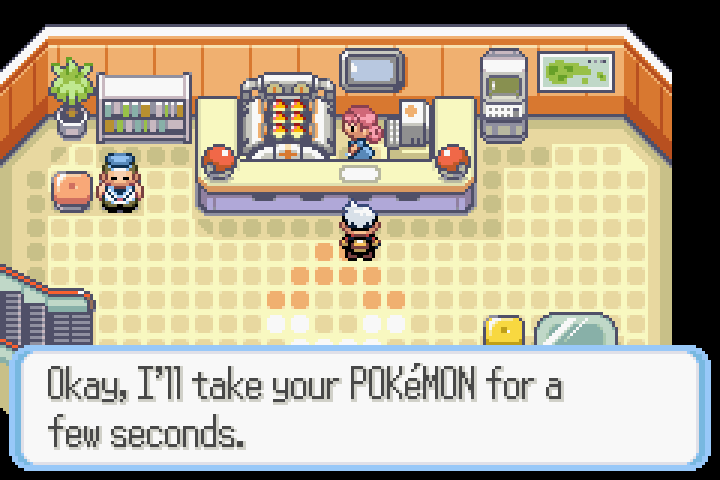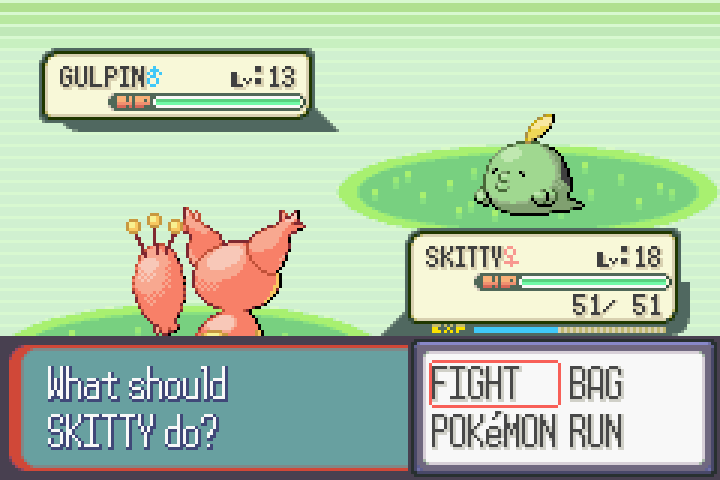After we quit playing Breath of Fire IV, we went back to Lenna’s Inception –which is an interesting game, written in Scala! we are in the final-ish boss, will talk about it soon–. But is not ideal to play with the kids, because they still don’t have the skills for such an action game –some bosses took me a good number of attempts–.
So we were looking for a new RPG to play, and because we have watched a few seasons of Pokémon on Amazon Prime, it seemed a good franchise to try. One of the first seasons we watched was “Pokémon: Advanced” –first aired on Japan 20 years ago–, and that season is apparently paired with Pokémon Ruby on the Game Boy Advance.
The graphics are super-cute, the GBA is easy to emulate –I have a GBA, but I don’t have this game, and the screen isn’t great by today’s standards–, and the kids are very familiar with the Pokémon of that series, so on a lazy Saturday morning, we decided to give it a go.

Recharging Pokémon after a battle
I don’t know how far we will get, but we are around 10 hours into the game –after a few short sessions–, with two gym badges, and a good set of Pokémon over level 15. Which is definitely more than I was expecting!
I’m not going to make a full review of the game here, but I’m surprised how deep the mechanics are. It is all simple on the surface: you can walk in tall grass to find Pokémon, battle other trainers, and move from town to town fighting the gym leaders to get badges; but that simplicity is perfect to pickup and play. There are some quests, but looking on your inventory you get clues on what to do next. And all very family friendly –you don’t kill Pokémon, they faint–.

Each Pokémon has its own strategy
And the combat is what I’m finding the most interesting. I have listened to some podcasts talking about the game, and most refer to it as “rock-paper-scissors” mechanics, but that is probably simplifying too much.
Yes, there is a lot of that. For example: a water Pokémon with water moves is strong against a fire Pokémon. Early on things aren’t too fun because the low level Pokémon have only two moves, but when you start to have move options and you need an strategy to win a battle where your opponent is stronger than you, it is clear that the mechanics are deeper than that.
Is not only fun finding those strategies, it is also very satisfying when you make a difficult battle easy by combining some moves in a way it wasn’t obvious when you first met that opponent.
So far I think we have barely scratched the surface –the main story is about 35 hours–, and it is possible we will get bored, but so far we are enjoying it. And I’m learning a lot of game design!